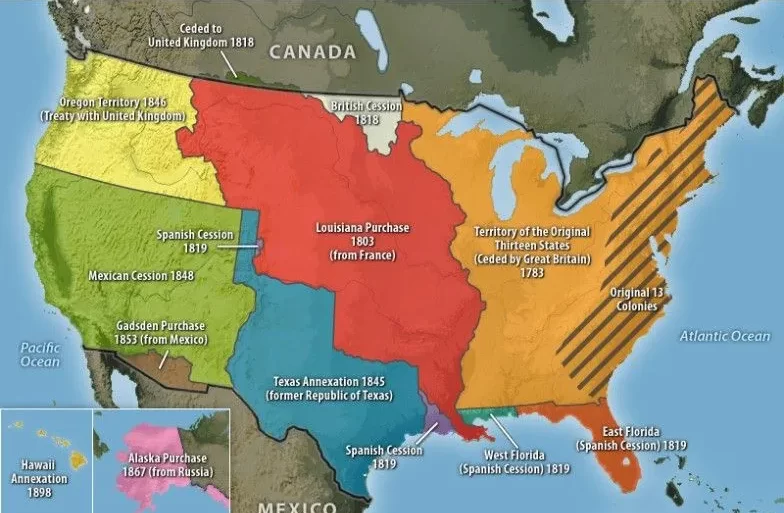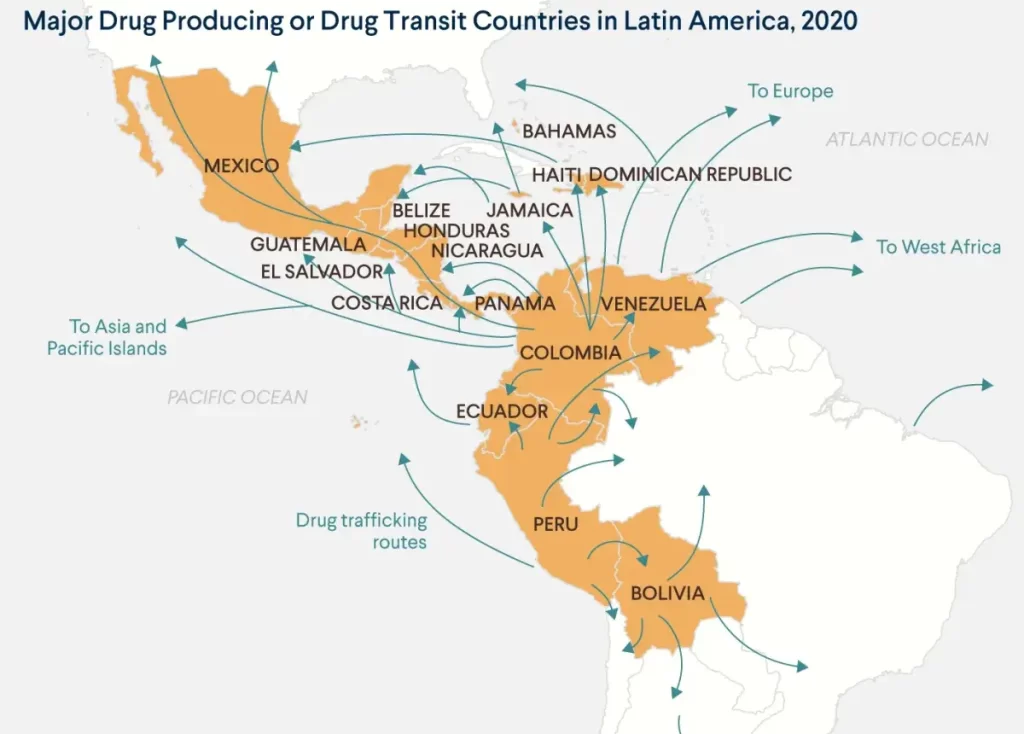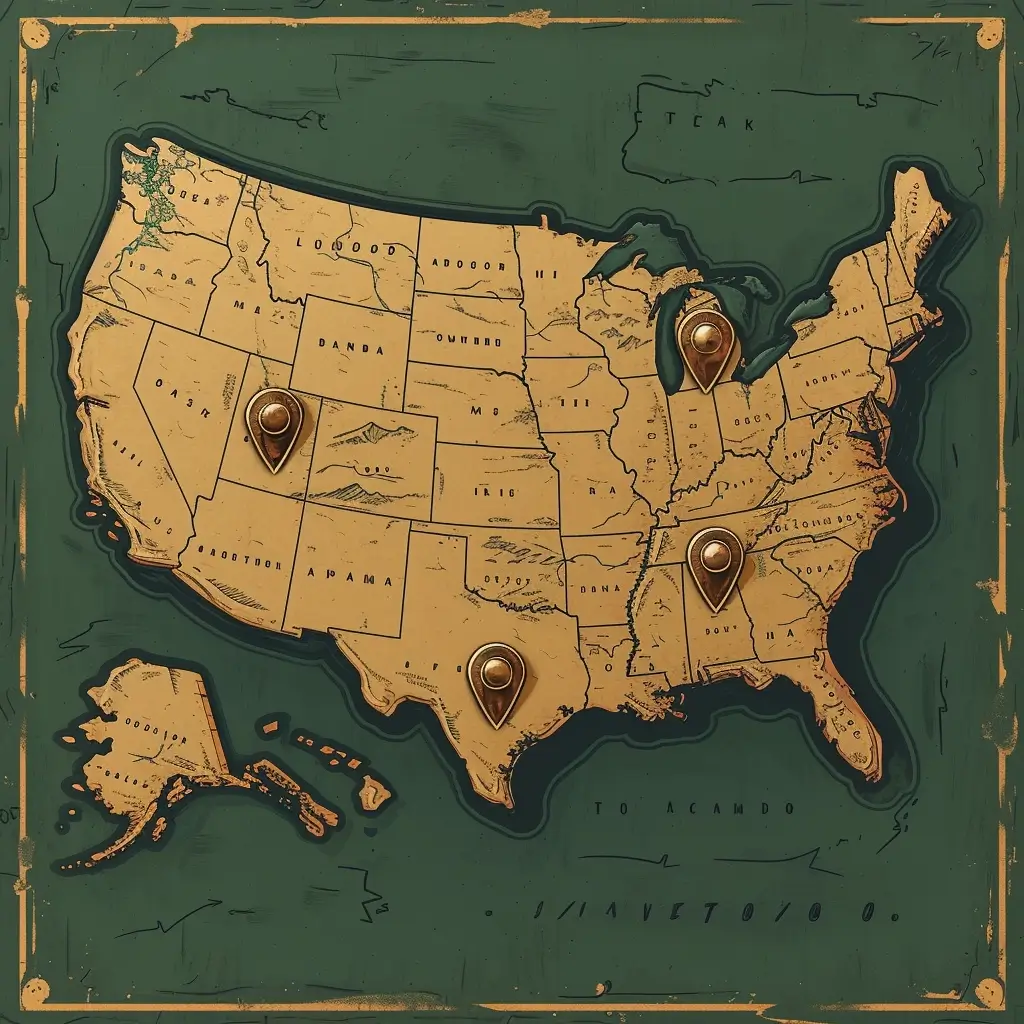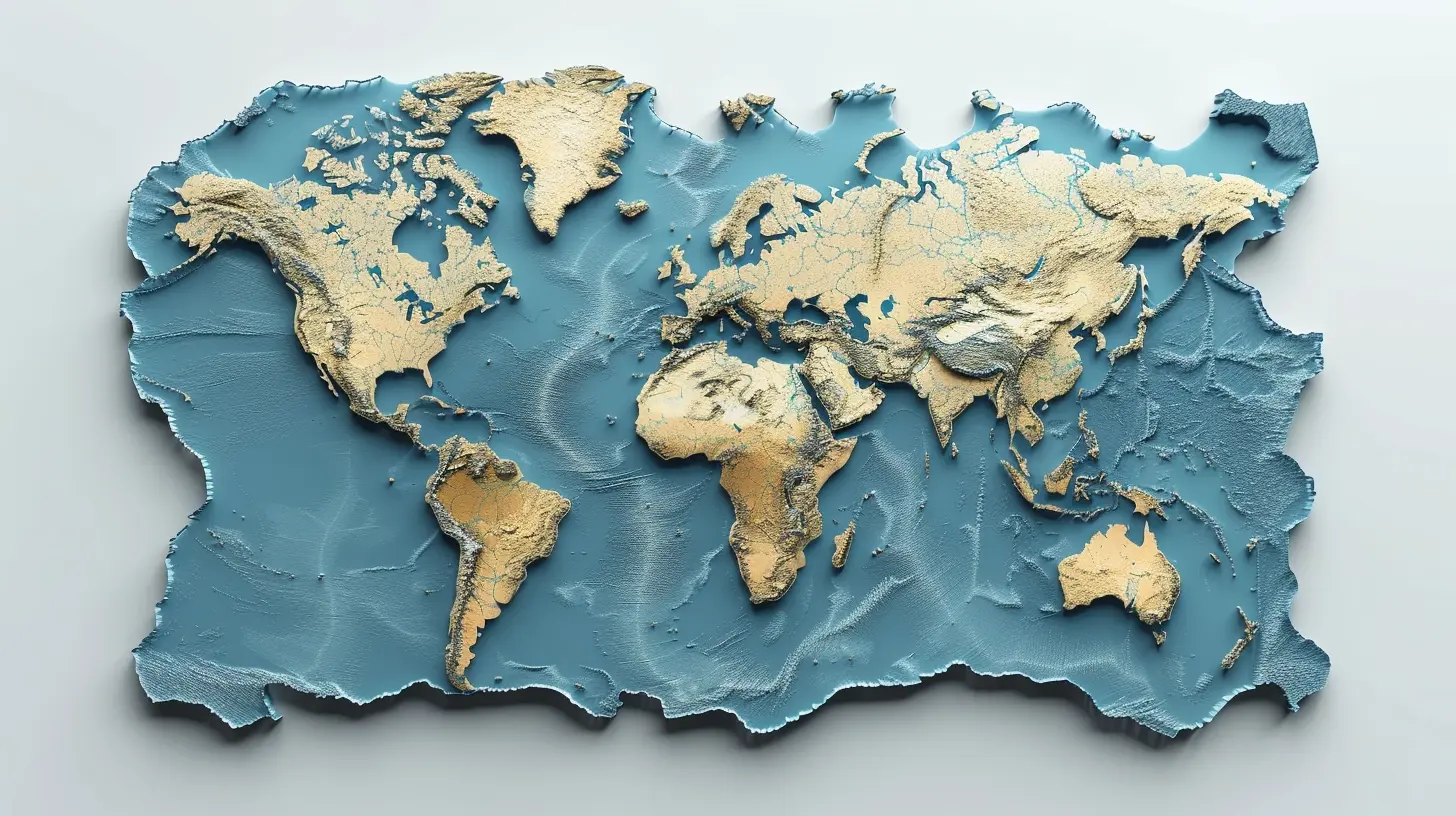United States’ Geographical: In the ever-changing landscape of geopolitics, geography plays a pivotal role in shaping a nation’s destiny. For the United States of America, its strategic location exerts a profound influence on its policies, alliances, and challenges. This article, titled ‘Why USA is Prisoner of Geography?’, explores how the geographical features of the US have contributed to its current standing in the world.

Understanding the geographical factors that influence the United States
The United States is blessed with a diverse range of geographical features that have shaped its history and continue to impact its present. From the Atlantic and Pacific Oceans that provide natural boundaries, to the vast expanse of the Mississippi River that facilitates internal trade, the US is endowed with geographical advantages. The Appalachian Mountains, the Rocky Mountains, and the Great Plains all contribute to the nation’s unique landscape. These features have influenced the settlement patterns, economic development, and even cultural identities of different regions within the country.
However, this exceptional geography also presents unique challenges. The proximity to Mexico poses immigration and security concerns, while the Arctic region holds significant geopolitical implications. The United States’ reliance on oil imports from the Middle East and its need to protect vital sea lanes further highlight the impact of geography on its policies and alliances. Understanding these factors is crucial to comprehending the nation’s position in the global arena.
The impact of geography on the United States’ foreign policy
Geography plays a significant role in shaping the United States’ foreign policy decisions. The country’s access to the Atlantic and Pacific Oceans has made it a dominant naval power and allowed it to project its influence globally. The Monroe Doctrine, formulated in response to European colonial ambitions in the Americas, highlighted the United States’ determination to protect its sphere of influence in the Western Hemisphere. The nation’s geographical position has also influenced its relationships with neighboring countries, particularly Canada and Mexico, and its involvement in regional conflicts.
Moreover, the United States’ geographical advantages have also led to its involvement in international affairs. Its role as a global superpower is partly attributed to its strategic positioning, which enables it to project power and protect its interests across the globe. The country’s military bases located in different regions further exemplify the influence of geography on its foreign policy decisions.
How geography shapes the United States’ economic landscape
Geography plays a vital role in shaping the United States’ economic landscape. The country’s vast size and diverse geography contribute to regional specialization and the development of different industries. For instance, the fertile soil in the Midwest has made it the nation’s agricultural heartland, while the coastline facilitates trade and maritime commerce. The availability of natural resources, such as oil, coal, and minerals, has also influenced the country’s energy production and economic priorities.
Furthermore, the transportation infrastructure in the United States is intrinsically linked to its geography. The Mississippi River, with its extensive network of tributaries, has historically served as a crucial transport route for goods, connecting the agricultural heartland to the coastal regions. The construction of railroads and highways has further enhanced connectivity and facilitated trade within the country. Understanding the geographical factors that underpin the United States’ economic landscape is essential to comprehending its economic strengths and vulnerabilities.

The role of geography in the United States’ military and defense strategies
Geography plays a critical role in shaping the United States’ military and defense strategies. The country’s geographical advantage of having oceans on both sides provides a natural defense barrier. The presence of mountain ranges and vast open spaces also offers strategic advantages in terms of defense and military operations. The United States’ military bases, strategically located across different regions, allow it to project power and respond rapidly to global threats.
The United States’ geographical position has also influenced its role in international conflicts. Its involvement in the Middle East, for example, can be attributed to its dependence on oil imports from the region and its need to protect vital sea lanes. Similarly, its relationships with countries in the Asia-Pacific region are shaped by its desire to maintain stability and ensure freedom of navigation in the South China Sea. Geography plays a crucial role in determining the United States’ military priorities, alliances, and defense strategies.
The challenges and opportunities presented by the United States’ geographical position
While geography has provided the United States with numerous advantages, it also presents unique challenges. The proximity to Mexico, for instance, has led to immigration and security concerns. The country’s geographical position makes it a primary destination for immigrants, both legal and illegal, seeking better opportunities. This has fueled debates on immigration policies and border security.
The Arctic region presents another set of challenges and opportunities for the United States. As the polar ice caps melt due to climate change, new shipping routes and access to untapped natural resources are becoming available. The United States, along with other Arctic nations, needs to navigate the geopolitical implications of this changing landscape and ensure its interests are protected.
Exploring the historical context of the United States as a “Prisoner of Geography”
To understand why the United States is a “Prisoner of Geography,” it is essential to delve into its historical context. The nation’s expansion westward, driven by the belief in Manifest Destiny, was influenced by geographical factors. The acquisition of vast territories, such as the Louisiana Purchase and the Mexican Cession, not only expanded the country’s territory but also shaped its political and economic development.
The United States’ historical experiences, such as the Civil War and the Cold War, have also been influenced by geography. The divide between the industrialized North and the agrarian South, as well as the ideological battle between the United States and the Soviet Union, can be understood in the context of geographical factors. The historical context provides valuable insights into the United States’ current position and its challenges as a “Prisoner of Geography.”
Examining case studies and examples of the United States’ geographical constraints
To further illustrate the United States’ geographical constraints, it is essential to examine specific case studies and examples. The challenges posed by the United States’ proximity to Mexico and the issues related to immigration and border security can be analyzed in detail. The impact of climate change on the Arctic region and the implications for the United States’ interests can also be explored.
Additionally, historical examples, such as the United States’ involvement in conflicts in the Middle East or its relationship with China in the Asia-Pacific region, can shed light on the nation’s geographical constraints. By examining case studies and examples, we can gain a deeper understanding of the United States’ challenges and the complexities of its geographical position.
The future implications and potential solutions for the United States as a “Prisoner of Geography”
As we look to the future, it is crucial to consider the implications of the United States’ geographical constraints and explore potential solutions. Climate change, evolving geopolitical dynamics, and technological advancements will continue to shape the nation’s destiny. The United States needs to adapt its foreign policy, economic strategies, and defense priorities to navigate these challenges effectively.
Investing in renewable energy sources, diversifying trade routes, and strengthening diplomatic ties can help mitigate some of the challenges posed by geography. Embracing technological advancements in transportation and communication can further enhance connectivity and reduce the impact of geographical barriers. By proactively addressing these issues, the United States can position itself for a future that is not solely determined by its geographical constraints.

Reflecting on the significance of geography in shaping the United States’ past, present, and future
Geography has played a significant role in shaping the United States’ past, influencing its present, and will continue to impact its future. The country’s exceptional geography provides it with numerous advantages, from natural boundaries to strategic positioning. However, it also presents unique challenges, such as immigration concerns and geopolitical complexities.
By understanding the link between geography and the destiny of the United States, we can gain insights into its foreign policy decisions, economic considerations, and the challenges it faces in maintaining its superpower status. Reflecting on the significance of geography allows us to appreciate the complexities of the United States’ position as a “Prisoner of Geography” and explore potential solutions for the future.
In conclusion, geography shapes the United States in profound ways, exerting its influence on the nation’s policies, alliances, and challenges. Exploring the intricacies of the United States’ geographical factors provides us with a deeper understanding of its past, present, and future. The USA, indeed, finds itself as a prisoner of its own geography, but with careful consideration and strategic planning, it can navigate the challenges and harness the opportunities presented by its unique position in the world.
If you found this exploration into the United States’ geographical dynamics insightful, you may also appreciate our comprehensive analysis of China’s Geography. Discover how China’s own unique geographical features influence its global strategies, economic policies, and societal development. Join us as we uncover another layer of how geography dictates the destiny of nations.



